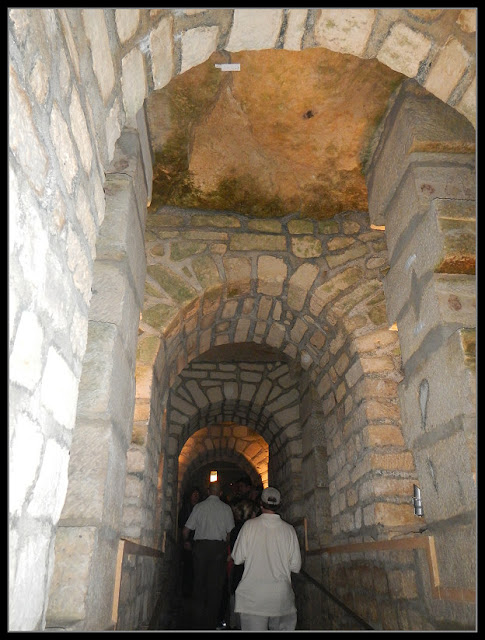The Paris Catacombs have their origins in the limestone quarries situated on the outskirts of the city. This natural resource has been in use since the time of the Romans, and provided construction material for the city’s buildings, as well as contributed to the city’s growth and expansion. It was only after during the second half of the 18th century, however, that the former limestone mines (now under the city as it expanded over the centuries) were transformed into burial places.
The ossuary was founded when city officials were faced with two simultaneous problems: a series of cave-ins starting in 1774 and overflowing cemeteries, particularly Saint Innocents.
This gave rise to improper burials, open graves, and unearthed corpses. Quite naturally, people living close to such places began complaining about the strong stench of decomposing flesh and the spread of diseases from the cemeteries.
Nightly processions of bones from 1786 to 1788 transferred remains from cemeteries to the re-enforced tunnels, and more remains were added in later years.
The underground cemetery became a tourist attraction on a small scale from the early 19th century, and has been open to the public on a regular basis since 1874 with surface access from a building at Place Denfert-Rochereau.
(From Wikipedia and http://www.ancient-origins.net/)
Going Down
Steps down to a well
And another well
Signs of the wall tell you what street is above you
This notes that an aqueduct is near (or was where we were standing )
Some Carving in the limestone
The tunnels are about 7-8 feet tall.
Each collection has a sign tells you the section of the cemetery (or the cemetery itself) and when those remains where moved to their current locations in the Catacombs
Only the major bones were stacked or arranged neatly, the rest were thrown over the back of the wall formed by the major bones
The green is mould from water dripping on the remains
There is one section that contains remains of those killed during the French Revolution (not sure if this is it) You can see bullet holes in some of the skulls
Beyond begin the halls and caverns of walls of carefully arranged bones. Some of the arrangements are almost artistic in nature, such as a heart-shaped outline in one wall formed with skulls embedded in surrounding tibias; another is a round room whose central pillar is also a carefully created "keg" bone arrangement. Along the way one would find other "monuments" created in the years before catacomb renovations, such as a source-gathering fountain baptised "La Samaritaine" because of later-added engravings. There are also rusty gates blocking passages leading to other "unvisitable" parts of the catacombs – many of these are either un-renovated or were too un-navigable for regular tours.
It's not often you get to photograph remains like this so I've tried some arty shots
Although the Paris Catacombs are still open to the general public today, access is limited to only a small fraction of the network. It has been illegal since 1955 to enter the other parts of the catacombs.
Nevertheless, during the 1970s and 80s, the catacombs have been explored illegally by Parisian urban explorers known as Cataphiles. Some of the spaces have even been restored and turned into creative spaces. One of these underground caverns, for instance, was transformed into a secret amphitheatre, complete with a giant cinema screen, projection equipment, a couple of films and seats. The neighbouring area was revamped into a fully-stocked bar and a restaurant, perhaps where the patrons of the amphitheatre could get a snack or a meal.
Read more: http://www.ancient-origins.net/ancient-places-europe/dark-underworld-paris-catacombs


































No comments:
Post a Comment